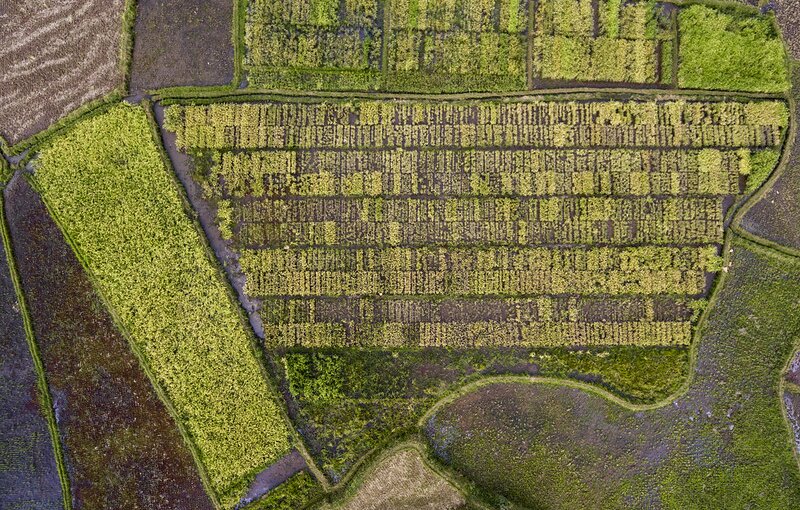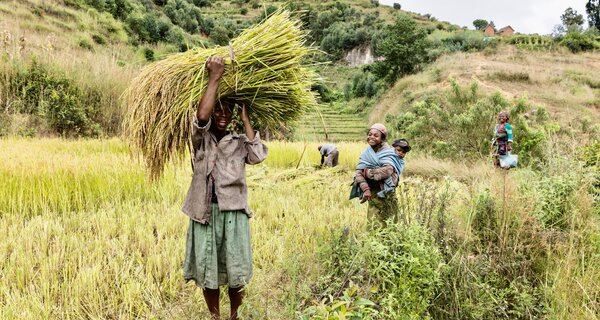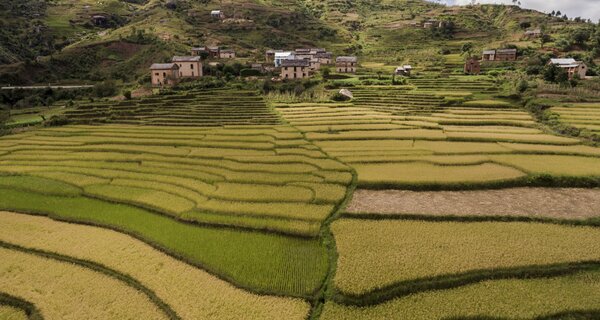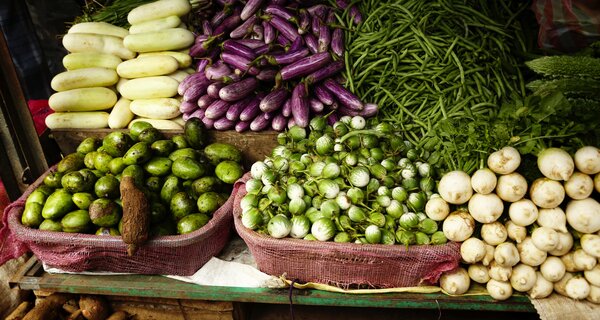Africa’s Food Security Depends on Nature’s Revival

Field trials of rice established by AfricaRice breeder Negussie Zenna in Antisirabe. Dozens of different rice types from Madagascar and beyond are grown in small rows and monitored through the season. The trial includes two new cold-tolerant varieties released in the country’s highlands in 2015 through an international research effort. (Photo: Toby Smith/Reportage by Getty Images for Crop Trust)
16 December 2022
“Prepare now for the solutions of tomorrow” is a Congolese proverb that could easily serve as a motto for a global community facing the ever-growing challenge of food insecurity in the Global South.
Yet this simple concept is increasingly difficult to put into practice as climate change exacerbates the rapid loss of biodiversity in nature—the very thing that offers these solutions.
This week, representatives of national governments and others are gathering at the UN Biodiversity Conference in Montreal, Canada, to discuss, and hopefully adopt, a new set of goals to halt and indeed reverse the loss of nature over the next decade through the Convention on Biological Diversity (CBD) post-2020 framework process.
Unfortunately, delegates at the 15th meeting of the Conference of the Parties (COP15) are inheriting a track record of failure: none of the Aichi Biodiversity Targets—set in 2010—was fully implemented last decade, while only six out of 20 were “partially achieved” by the 2020 deadline.
Our inability to stop nature’s ‘bleeding’ is most visible in Africa, where climate change has devastated ecosystems and human livelihoods on a continent where hunger affected 278 million people last year. The region has the highest prevalence of moderate or severe food insecurity in the world, according to the Food and Agriculture Organization of the United Nations.
Path to Success
However, failure can be a stepping stone to success. There is still time to reverse the destructive trend that threatens the world’s biodiversity, and humanity itself.
Fortunately, we know how to chart a path to greater food security in Africa. It starts with the continent’s genebanks, which conserve agricultural biodiversity that is globally unique yet remains understudied and largely untapped. Smallholder farmers, researchers and plant breeders can use these valuable seed repositories to develop and grow crops and varieties that are able to withstand harsh environments and support landscape restoration.
Preparing now for the solutions of tomorrow means protecting this diversity for our food systems—a goal recognized in the first draft of the CBD’s post-2020 global biodiversity framework, specifically Target 10 on the conservation and sustainable use of biodiversity in agriculture, aquaculture and forestry.
Countries can play their part in this process by ensuring the active management, recovery and conservation of wild and domesticated species in their genebanks, providing farmers with an insurance policy against climate change and its devastating effects, such as drought, heat, plant diseases and pests.
Good Practices
When the new biodiversity framework is adopted, it will be crucial to implement activities designed to reach the targets as quickly as possible. This process can be accelerated through the exchange of knowledge on good practices, so that countries know how best to conserve and sustainably use biodiversity in food systems within their own national context.
One of the success stories in Africa that can help guide countries to the new framework is Seeds for Resilience, which provides financial and technical support to secure the crop diversity held in the national genebanks of Ethiopia, Ghana, Kenya, Nigeria and Zambia. The project, which began in 2019, is helping raise the profile of many resilient and nutritious varieties and crops that have been neglected in research and breeding programs and are often being lost from farmers’ fields.
Good practices also featured in a recent global initiative on adapting agriculture to climate change through the use of crop wild relatives in plant breeding. These wild ancestors of our crops contain unique traits that can help breeders develop new varieties. The 11-year program harnessed the expertise of 18 research institutions across Africa.
One highlight of this initiative involved scientists in Morocco and Tunisia who identified a wild grasspea species that can resist broomrape, a parasitic weed that forced some Mediterranean countries to abandon the crop. The finding may help revive the cultivation of grasspea, whose tolerance to drought makes it a favorite for many farmers in drylands.
Another highlight was the development of a durum wheat variety that seems to be more drought tolerant than existing options. Named Jabal, which means “mountain” in Arabic, this climate change-resilient variety got its name from one of the farmers taking part in the evaluation program during its development, who said that its distinctive black spikes were like the Atlas Mountains, “strong and proud”.
Food security is only achievable with a healthy and functioning biosphere. The speedy implementation of the CBD’s post-2020 framework would not only help reverse nature’s decline but lift millions of people out of a life of hunger and poverty.
By conserving crop diversity today, we are providing solutions for tomorrow’s agriculture.
Category: Food Security
Disclaimer
The opinions expressed here are those of the author(s) and do not necessarily reflect the opinions or views of the Crop Trust. The Crop Trust is committed to publishing a diversity of opinions on crop diversity conservation and use.
We'd like to hear from you about this or any of our other articles. Reach out to us with news tips or your thoughts at editor@croptrust.org.





